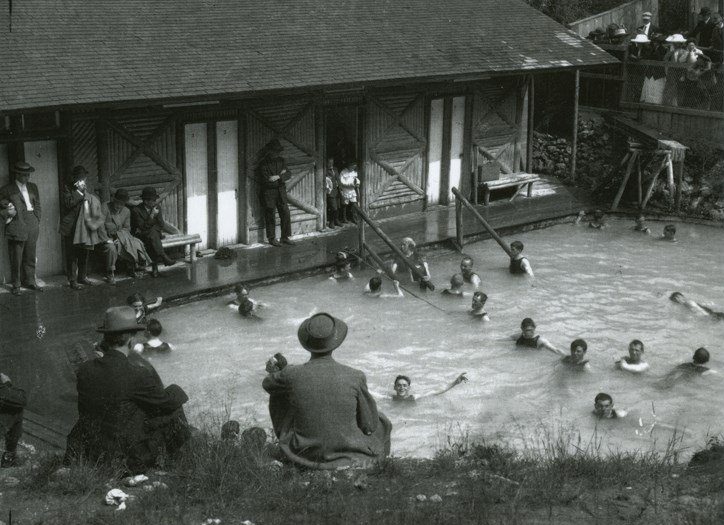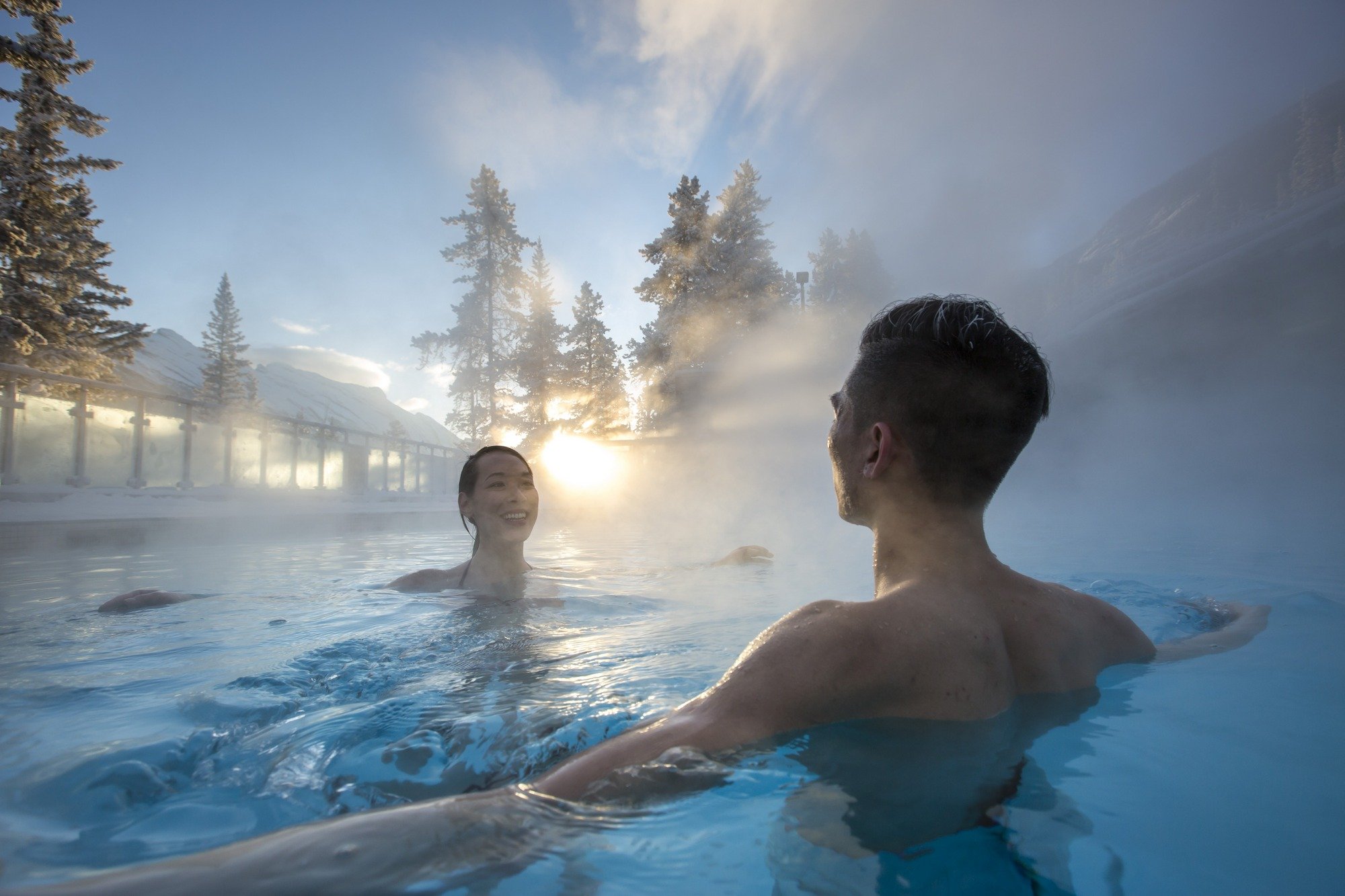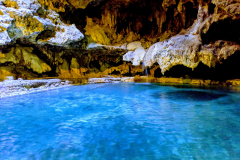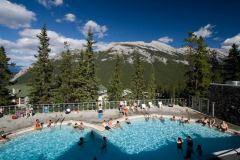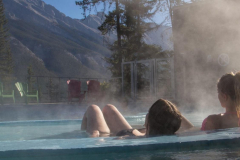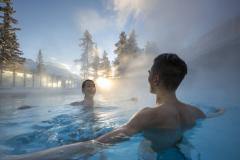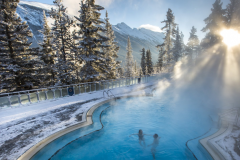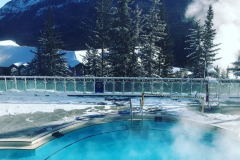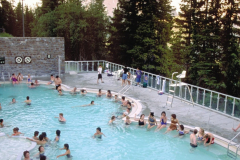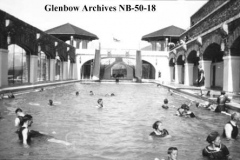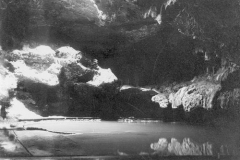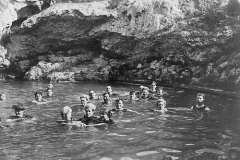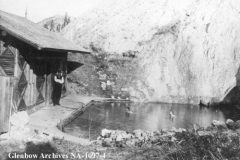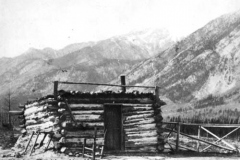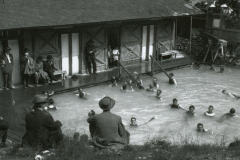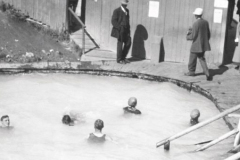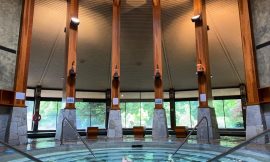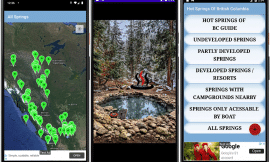Thumbs Up or Down?
0 Liked this Spring
0 Didn't like this Spring
The area that is today known as Banff National Park was home to First Nations people prior to European exploration in the 19th century. For hundreds of years, they have relied on the region’s hot springs as a source of healing and rejuvenation.
In 1888, A surveying team (See Cave& Basin below) for the Canadian Pacific Railway came upon the hot springs while studying the area. Two years later, the government established Rocky Mountain Park, which is the forerunner of Banff National Park, as a federal reserve for the area surrounding the hot springs. The federal government commissioned the construction of roads, bridges, and other amenities to make the area more appealing to visitors. In 1888, the Banff Springs Hotel was constructed, and the land surrounding Lake Louise was added to the park several years later.

As the park’s popularity grew, the Brewster brothers, Bill and Jim, opened an outfitter and guiding business in 1900. Because of the area’s growing popularity, roads were built between Banff and Lake Louise, as well as to the Radium Hot Springs. Banff has grown into the premier vacation destination it is today as a result of the discovery of the hot springs and the construction of modern roads (such as the Trans Canada Highway, which was built through the park in 1962) that allowed automobiles to access the park and the hot springs.
For centuries, the Banff Hot Springs have been used for their myriad health benefits. The hot springs can help with the following diseases and physical issues:
Hot springs can aid in the treatment of skin conditions such as:
– Acne and eczema.
– It helps to circulate blood and calm stiff muscles.
– Bathing in the springs can help to alleviate arthritis symptoms.
– The high mineral content of the water helps to eliminate toxins from the body.
– Hot springs aid in the absorption of important minerals by our bodies.
– The immune system is boosted by soaking in water.
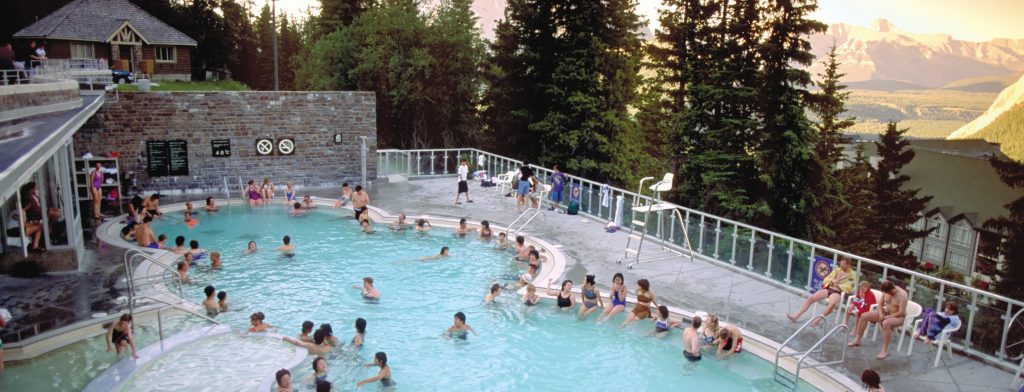

Cave and Basin
The Cave and Basin in Banff is where Canada’s national park system began. The cave and basin on the lower slopes of Sulphur Mountain were “found” in 1883 by three railway workmen, brothers William and Tom McCardell and their colleague Frank McCabe. We know that these three were not the first to find the thermal springs because First Nation legends about the cave’s warm waters persist, and human activity was present long before Europeans came. They were the first, though, to recognise the potential profit in the warm mineral water.
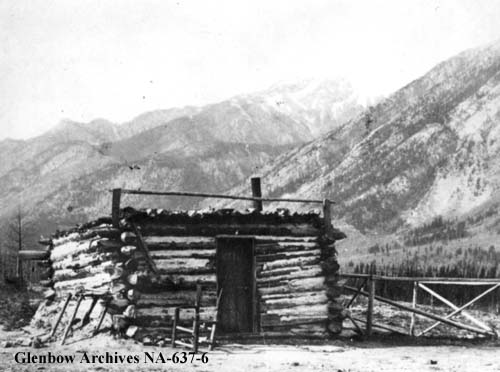
When the Hot Springs Reserve was established in 1885, the government of Canada denied the trio’s claim to the property.
The reserve was massively extended two years later, becoming Rocky Mountains National Park, Canada’s first of its type. The park was renamed Banff National Park in 1930, and it has since become one of Parks Canada’s flagship parks. The Cave and Basin was designated as a National Historic Site by the Minister of the Environment in 1981, following the recommendation of the Historic Sites and Monuments Board of Canada.
You’ll notice that a lot of these photos show individuals swimming in the hot springs. This was once permitted since the mineral water was thought to have powerful medicinal properties. Humans are no longer permitted to soak in any of the Cave and Basin site’s thermal springs because we constitute a serious threat to the park’s most endangered species, the Banff Springs Snail. If you want to visit the hot springs while in Banff, the popular Banff Upper Hot Springs is the place to go.
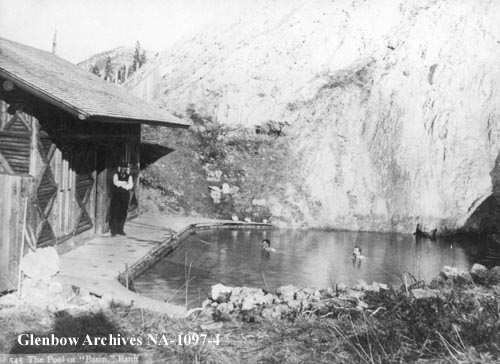
Consider visiting the Cave and Basin the next time you’re in Banff. It’s where it all began.
The only place in the world where you can watch tropical fish and get snowed on!!
The destruction of these natural treasures was more than simply an aesthetic loss, since a small, unremarkable pond snail lived unnoticed in the springs. The Banff Springs snail (Physella johnsoni) was once only found near Sulphur Mountain, where it was endemic to five springs and their outflow streams. The Upper Hot Springs, Kidney Spring, Middle Springs, Cave and Basin, Vermilion Lakes Spring, and a warm stream near the Banff Springs Hotel were all reported to have it. They can now only be found in one of the Cave and Basin springs, as well as its outflow stream and the Cave and Basin marsh beneath the spring.
Development and human disturbance of the algal mats on which the snail feeds are thought to be the cause of its disappearance in other sites. Because all swimming in the Cave and Basin is now prohibited in order to protect the species, the resort has lost its original purpose. It is now a museum as well as an interpretive centre.
The stream and marsh below the Cave and Basin are relatively clean “warm water” ecosystems as compared to the springs themselves. However, following the war, inhabitants of Banff put a variety of tropical fish into the marsh, indicating that human intervention was at work (no one seems to know exactly when this happened). Angelfish, guppies, and tetras have all been seen in the marsh at one time or another, but they did not survive and are likely no longer existent. Gambusia affinis (mosquitofish), Poecilia latipinna (sailfin mollie), and Hemichromis bimaculatus are three invasive tropical fish species that have been found in the marsh (the jewel cichlid).
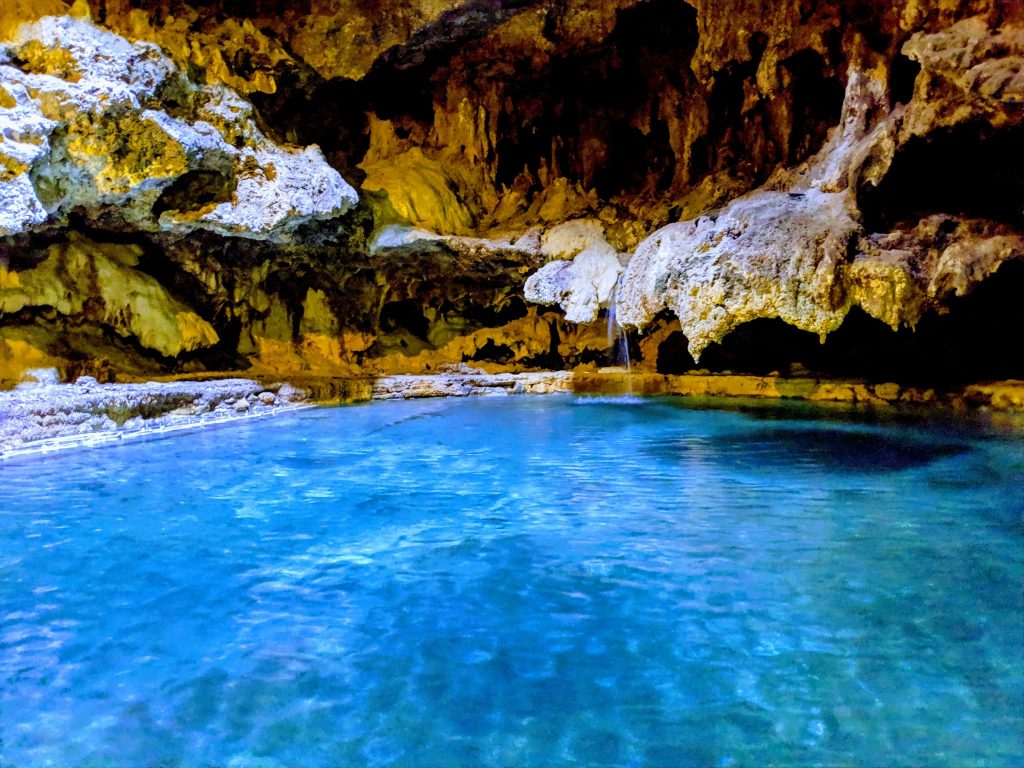
It’s simple to see these fish because the path to the Cave and Basin is properly marked. Continue west on the main street of Banff until you bridge the Bow River, then turn right. Continue another mile down the road. Walk up to the main building and around to the north side from the Cave and Basin parking area. North of the main structure, take the “Discovery Trail” (there is no reason to actually enter the building). A boardwalk leads down to the marsh, with a “fish-watching” platform at the end.
What distinguishes the Banff Hot Springs from the rest? What exactly is it that’s in the water? The answer is that the water contains a lot of minerals, including:
134 mg/l bicarbonate concentration
572 mg/l sulphate concentration
205 mg/l calcium concentration
Magnesium: 42 mg/l concentration
Sodium appears present in a concentration of 6.6 mg/l.
Pre-1880’s Indigenous Peoples were the first to soak in the hot springs. These were sacred waters – a place to cure illness and maintain health.
1883- Canadian Pacific Railway workers discover the Cave and Basin Hot Springs at the foot of Sulphur Mountain. The discovery captures the attention of the nation and leads to the creation of Canada’s first national park, Banff National Park.


1884- Europeans visit the Upper Hot Springs for the first time.
1886- Construction of the first log shack and the Grand View Villa and bathhouse, later known as the Grand View Hotel.
1901- Grand View Villa is destroyed by fire and rebuilt.
1904 – Construction of the first government facility at the Upper Hot Springs, on the site of today’s Rimrock Resort. The facility offers two cement plunge basins, several bath tubs and a 7.2 m x 7.2 m swimming basin.
1915 – The Upper Hot Springs road opens to motorists.
1931 – The Grand View Villa burns again. The federal government acquires the lease for the property and begins work on the Upper Hot Springs bathhouse.
1932 – On July 1, the Upper Hot Springs bathhouse opens, complete with sulphur water swimming pool, plunge baths, steam rooms, tubs, showers and dressing rooms. Its splendor rivals the famous spas of Europe.
1961 – The pool is reconstructed and the interior of the bathhouse modified.
1995Restoration of the bathhouse to its 1932 appearance occurs. The restored bathhouse opened in August 1996 with a new spa, restaurant and gift shop as added services.
2001 – Pleiades Massage and Spa expands space within the bathhouse and offers a greater range of services to visitors.
This error message is only visible to WordPress admins
Error: No posts found. No posts made to this hashtag within the last 24 hours. No posts made to this hashtag.
This error message is only visible to WordPress admins
Error: No posts found. No posts made to this hashtag within the last 24 hours. No posts made to this hashtag.
Views:
1,846 views
